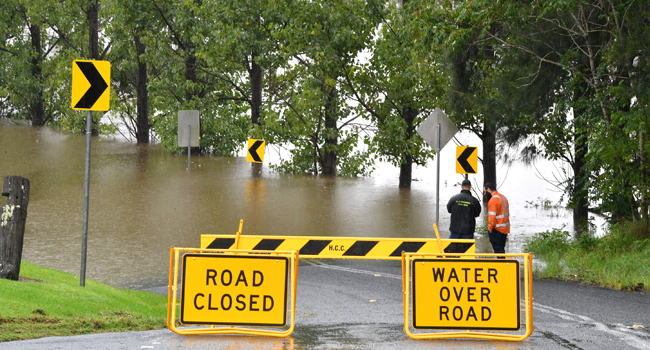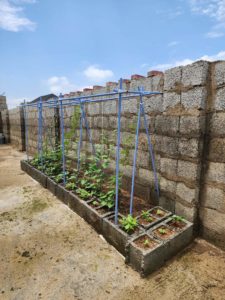Thousands Evacuated In Australia As ‘Scary’ Flooding Escalates

![]()
Torrential downpours lashed Australia’s east Monday, forcing thousands to flee the worst flooding in decades and pushing communities already battling drought, bushfires, and the coronavirus pandemic to “breaking point”.
Around 18,000 residents were told to evacuate their homes, as days of relentless rainfall caused rivers in Australia’s most populous state, New South Wales, to their highest levels in 30 years.
“The devastation is quite unbelievable,” said Port Macquarie cafe owner Marten Clark, who waded through waist-deep water to find his furniture washed away, and freezers, fridges and cooking equipment destroyed.
Aerial images from hard-hit areas showed the flood consuming rows of houses, with only their roofs above the water.
As some coastal communities received three months worth of rain in a few hours, emergency services said they rescued hundreds from floodwaters and fielded more than 8,800 calls for help.
In some areas, emergency workers travelled inland on “Surf Lifesaving” ocean rescue boats to reach stranded people.
So far, no fatalities or serious injuries have been reported.
But with more rain expected, eight million residents in Sydney and across the state were on Monday told to work from home if possible and avoid unnecessary travel.
“The water is still rising,” said Jo Dunstan, who owns a florist shop in the outer Sydney suburb of Windsor, as she watched debris-littered stormwater race past neighbouring homes.
“It’s scary, very eerie to say the least.”
Just over 12 months ago the region was parched: suffering prolonged drought, water restrictions and unprecedented bushfires.
“When you have been through three or four incidents that are life-changing on top of each other, it can make you feel like you are at breaking point,” said New South Wales Premier Gladys Berejiklian.
“I don’t know any time in a state history where we have had these extreme weather conditions in such quick succession in the middle of a pandemic.”
Australia ‘tested once again’
Scientists have warned Australia can expect more frequent and more extreme weather events as a result of climate change.
Prime Minister Scott Morrison, whose conservative government has been accused of dragging its feet on climate action, said Australia was “being tested once again” by a “terrible event”.
He told parliament that Australia’s defence force was expected to be called in to assist with the clean-up and recovery.
New South Wales’s Mid North Coast has been particularly badly affected, with Berejiklian declaring the region had been struck by a “one in 100 year” disaster.
In Sydney’s vast Hawkesbury-Nepean Valley, swollen rivers were at levels not seen since 1990, after the Warragamba Dam, the city’s main drinking water source, spilled over Saturday.
Around 500 gigalitres of water were drained from the dam — roughly equivalent to 200,000 Olympic size swimming pools or the total volume of water in Sydney Harbour.
Residents in some affected areas were allowed to return to their homes Monday after waters receded, but others were placed on high alert as floods moved toward their regions.
Education authorities said more than 200 schools were closed, including some that were damaged in the floods.
Andrew Hall, CEO of the Insurance Council of Australia, said it was too early to understand the extent of destruction and to “estimate the insurance damage bill”.
‘A dangerous situation’
The Bureau of Meteorology has forecast “treacherous” conditions Monday before the wild weather eases later in the week.
Flood operations manager Justin Robinson warned the rain was expected to cause flooding in previously unaffected areas as well as “renewed flooding in many of those communities that have already been impacted”.
“It is quite a dangerous situation that New South Wales is currently facing,” he said.
Rainfall records were expected to keep tumbling in the coming days as the deluge spreads into the state’s northwest, and further north into Queensland state where weather warnings were also issued.
Flash flooding occurred at the Gold Coast — almost 10 hours’ drive from Sydney — as the tourist hotspot was drenched.
Health officials have said the rain and floods will delay the already halting rollout of coronavirus vaccines in Sydney and surrounding areas.
AFP


